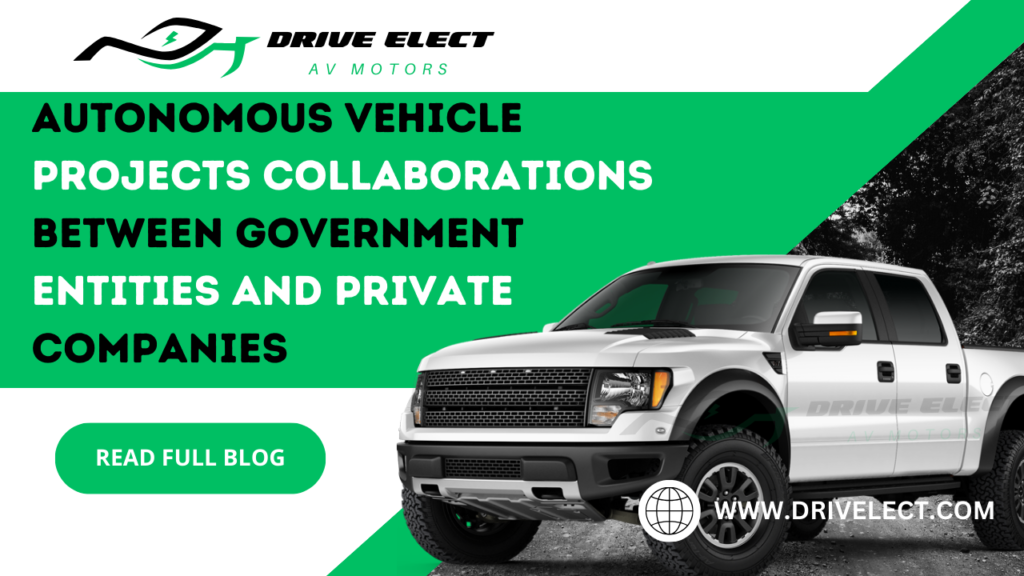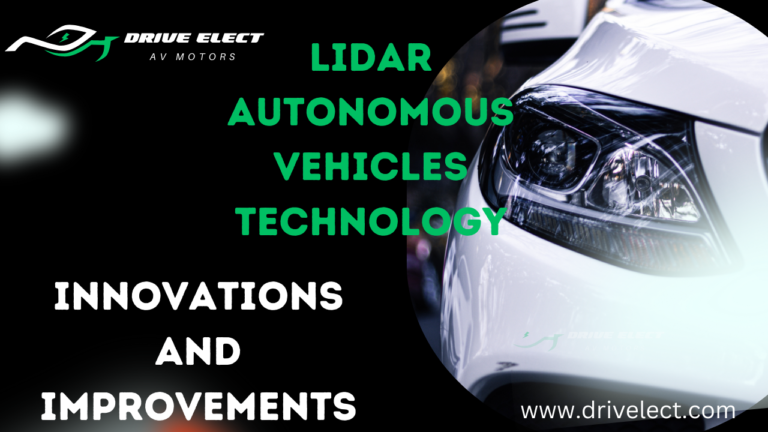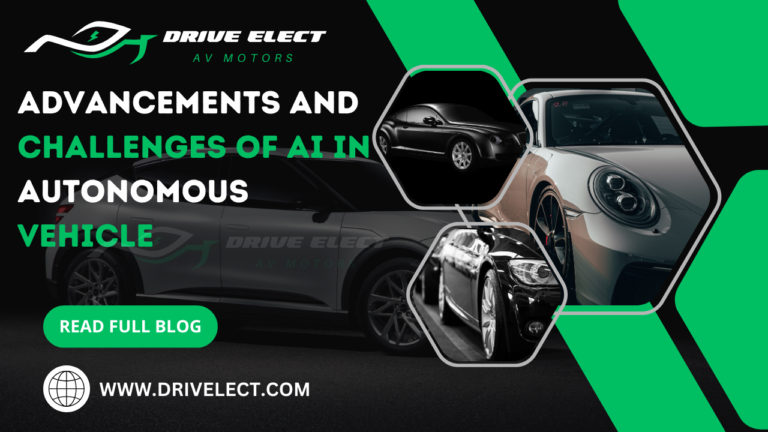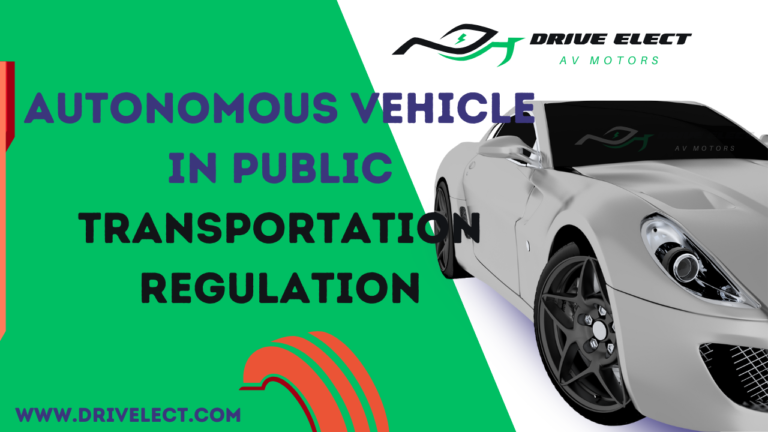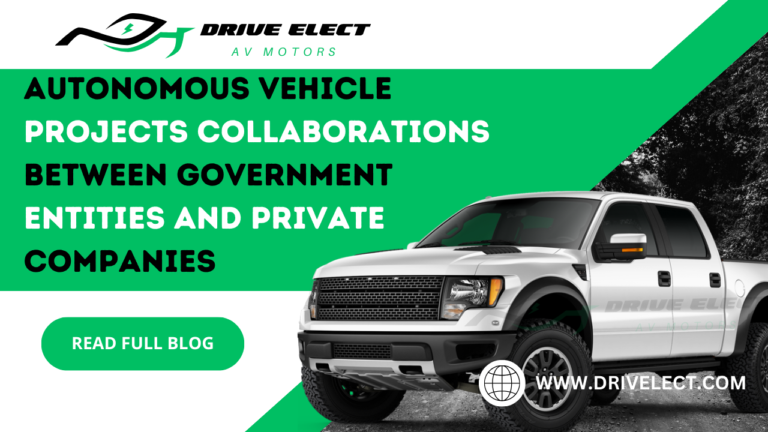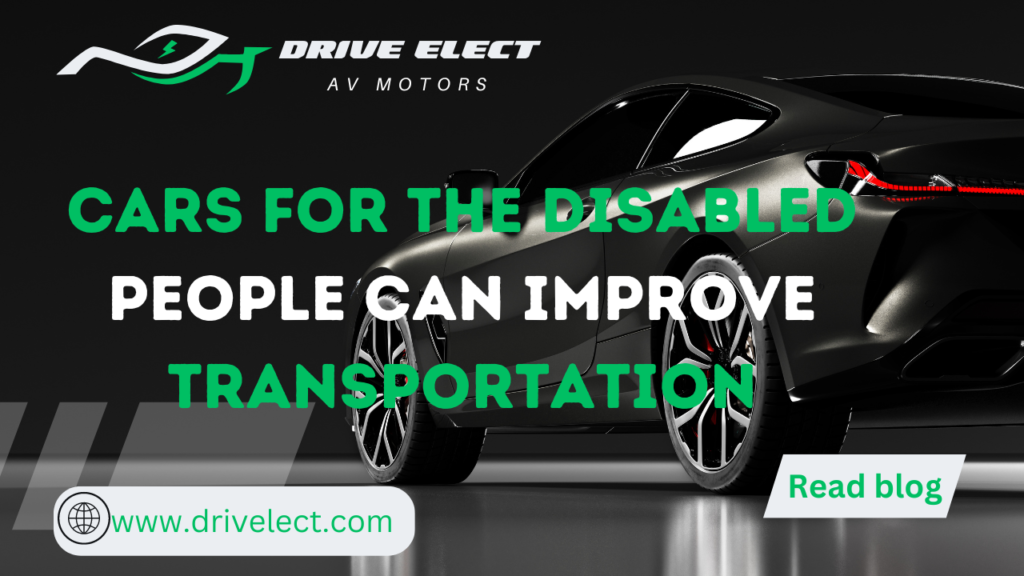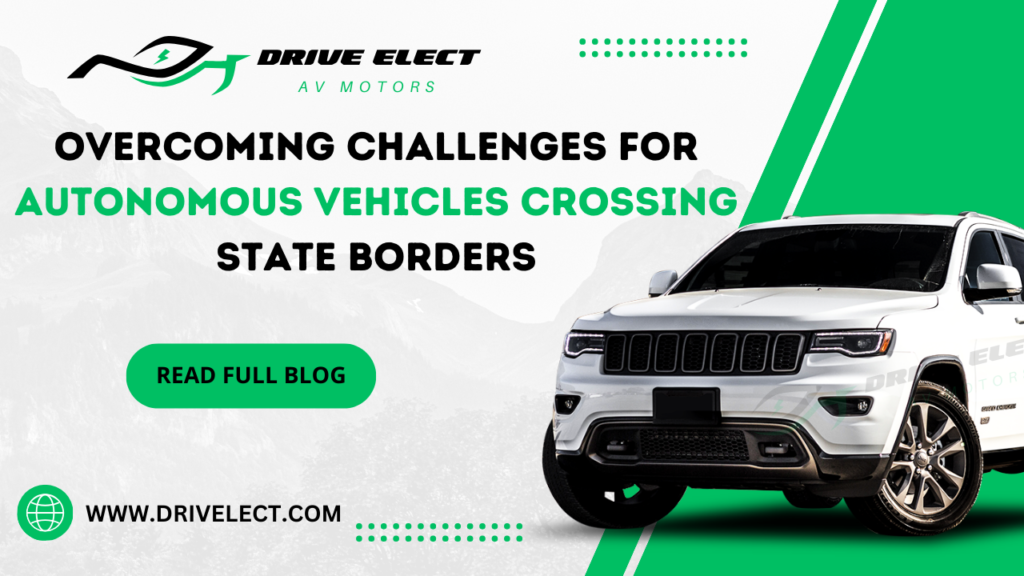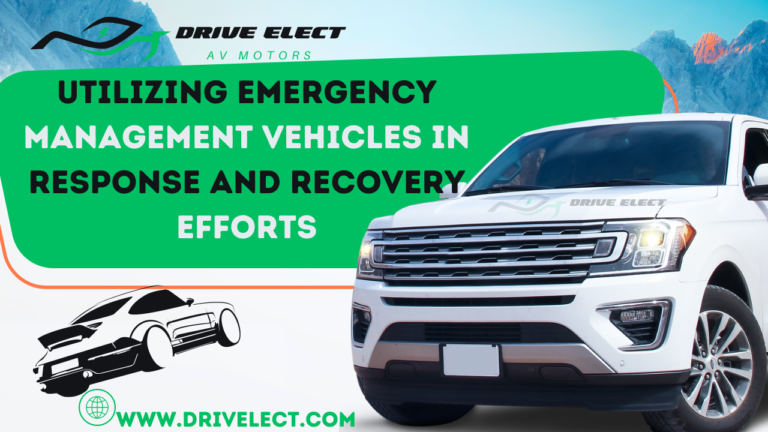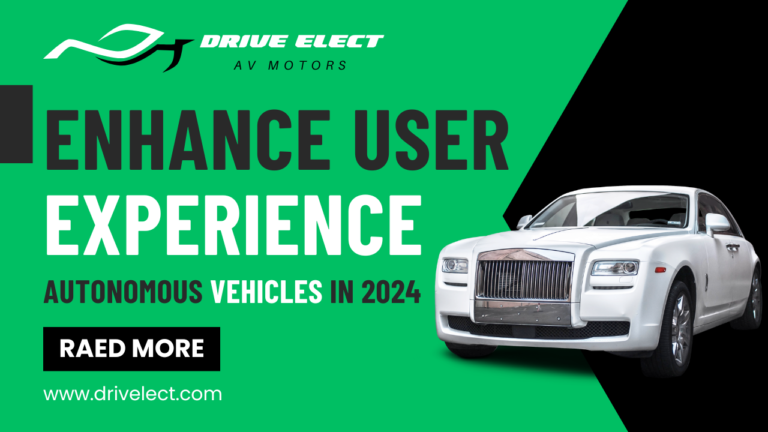In autonomous vehicle projects the Federal Highway Administration (FHWA) is working on a project to help make sure automated driving systems (ADSs) can be used safely on our roads. This project aims to create a plan for testing and evaluating these systems in different situations.
ADS developers and those in charge of the roads must work together to ensure everything works smoothly and safely.
By collaboration of autonomous vehicle projects, they can find and solve problems faster, which helps ADSs get ready for the roads sooner. This plan includes tools, like checklists and examples, to help everyone involved understand their roles and work together better.
The goal is to ensure ADSs can be utilized safely and effectively on our roads. This plan isn’t a strict set of rules but a helpful guide for everyone involved. It was created with input from ADS developers, road experts, and government officials.
By the autonomous vehicle projects is critical to making our roads safer, and this plan shows how different groups can work together to make that happen.
Table of Contents
ToggleAutonomous vehicle projects Collaborations between Government Entities and Private Companies
Collaboration – Why and How to Collaborate in autonomous vehicle projects?
Collaboration between those working on automated driving systems (ADS) and infrastructure owners and operators (IOOs) is essential for successful testing.
When everyone works together, it’s easier to spot and fix technology problems, whether technical, organizational, or strategic. Collaboration lets people with different skills and backgrounds come together to solve issues specific to ADS and roadways.
Talking openly and often from the start of a test helps ensure the testing goes well. Good communication also means everyone’s ideas are heard, improving the testing quality.
Testing ADSs can be risky for developers. But if issues are caught early, it’s simpler because everyone involved knows what to expect and what goals to work towards.
Collaboration also has other benefits, like getting specialized information from experts in different fields, sharing data that might be hard or expensive to get alone, cutting testing costs, and doing tests faster.
Getting ADS and roadway stakeholders to work together is an ongoing process and takes time. In the past, collaboration has been rare in this area, with ADS components often developed without input from roadway stakeholders.
When bringing stakeholders together, it’s essential to identify who needs to be involved and ensure everyone understands their roles and expectations. The collaboration should add value to what each stakeholder does.
During ADS testing, communication between infrastructure and ADS stakeholders is usually informal. ADS developers often talk with state agencies for approval to test on roads, but only sometimes with the IOOs directly. Concerns about sharing data, like protecting proprietary information, might stop stakeholders from sharing more.
Early involvement of stakeholders, not just during on-road testing but also during simulation and closed-track testing, is vital for getting accurate driving and roadway data. Collaborating with policymakers is also essential, as policies can affect how ADSs are developed and used.
There have been successful collaborations between ADS developers and IOOs, like the intelligent intersection project in Marysville, Ohio. In this project, the city, Ohio DOT, and Honda worked together to make intersections safer using ADS technology.
By autonomous vehicle projects is critical throughout the testing process, and this framework provides examples and recommendations for stakeholders to work together effectively.
Common Ground:
Common Ground” means ensuring everyone involved in testing automated driving systems (ADS) and managing road infrastructure understands each other well. This understanding is super essential for tests to work smoothly. When carrying out tests, everyone knows exactly what they’re aiming for, what they hope to achieve, and how they’ll see if they’ve succeeded.
Common Goals/Benefits:
“Common Goals/Benefits” begins by determining what each stakeholder wants to achieve with automated driving systems (ADS) testing. Then, it focuses on finding shared goals among all the parties involved. For example, some infrastructure owners and operators (IOOs) are testing innovative traffic signs and unique road markings to communicate with ADS systems. This collaboration aims to improve how road and traffic information is shared.
One way to establish common goals and benefits is by bringing together public and private organizations like the National Highway Traffic Safety Administration (NHTSA), the Federal Highway Administration (FHWA), and others. These organizations help educate and involve both ADS and roadway stakeholders. By working together, they gather feedback and move the field forward by sharing what they’ve learned.
“Common Goals/Benefits” is about figuring out what everyone wants, finding shared goals, and using organizations to educate and engage everyone involved. This collaboration helps improve the testing process and moves the field forward.
Common Terminology:
Effective communication is crucial when different groups work together. Sometimes, the words one group uses might mean something entirely different to another group.
For instance, in one case, infrastructure operators (IOO) and automated driving system (ADS) developers found that they understood the exact words differently. They had to create a shared language that everyone could understand to solve this. This takes effort but is worth it because it helps prevent misunderstandings.
Having a common language is essential for both ADS developers and IOOs. Some standards, like SAE J3016 and UL 4600, provide common terms for ADS technology. Similarly, having a standard way for IOOs and ADSs to share information is vital.
Another challenge is ensuring the equipment used by ADS technology works well with the infrastructure. To tackle this, there needs to be a minimum level of functionality that both ADS developers and IOOs follow during testing and afterward.
In one project, a team needed help communicating effectively at first. However, they found a solution by creating a unique vocabulary for their tests, which they shared using pictures.
As part of this effort, a taxonomy—a way of organizing information—was developed to help everyone communicate better during testing.
Effective communication is critical. Creating a shared language and understanding between ADS developers and IOOs helps prevent misunderstandings and ensures everyone can work together smoothly.
Standard Metrics and Measures:
Metrics and measures are tools used to measure and evaluate the outcomes of automated driving system (ADS) tests. Standard metrics and measures ensure that everyone involved can consistently assess, compare, manage, and track performance. This is important throughout all testing phases, from planning to execution and evaluation.
To ensure everyone is on the same page, ADS and infrastructure stakeholders should openly discuss and document their goals, objectives, metrics, terminology, and taxonomy used in testing. If any assumptions are made during testing, they should be shared among all stakeholders.
Consistency in traffic signs, road markings, and infrastructure design is another aspect of “Common Ground.” For example, corridors spanning multiple states might need to align their infrastructure to ensure consistent practices, making ADS testing safer and more efficient, benefiting the movement of goods and people across different areas.
Stakeholders have different problem-solving approaches, which can initially hinder collaboration. ADS developers often use an agile approach, while infrastructure operators follow a more linear approach. Understanding these differences can help stakeholders find common ground and work together effectively.
Establishing common ground is challenging, but initiatives like the National Dialogue on Highway Automation, led by the Federal Highway Administration (FHWA), aim to address these challenges.
Other initiatives, like the development of ADS concept operations and the Work Zone Data Exchange (WZDx), also contribute to creating a shared understanding and collaboration among stakeholders involved in ADS and roadway testing. These efforts are crucial for safely integrating and operating ADSs on our roads.
Partnership to address ADS navigation around work zones:
In autonomous vehicle projects the Pennsylvania Department of Transportation (Penn DOT) has partnered with eight other organizations to tackle the challenge of making work zones safer for automated driving systems (ADSs). This project involves Penn DOT, the Pennsylvania Turnpike Commission, Pennsylvania State University, Carnegie Mellon University, PPG Paints, and others.
The goal is to make it easier for ADSs to navigate work zones safely. The project will develop special coatings for work zone pavement markings and barrels to achieve this. These coatings will help ADS sensors detect them more easily. Additionally, the project will create advanced mapping and communication systems to assist ADSs in navigating through and around work zones without any trouble.
The testing phase will cover 17 different work zone scenarios, including urban, rural, and suburban setups with varying levels of complexity and duration. The testing process will begin in virtual environments, followed by tests on a track at Pennsylvania State University. Finally, real-world open road tests will be conducted on roads with active work zone sites across Pennsylvania.
Overall, this project aims to improve safety for drivers and ADSs in work zones by developing better infrastructure and communication systems. It’s a collaborative effort involving multiple organizations to ensure the success of ADS navigation through work zones.
Institute for Automated Mobility (IAM) (Arizona Institute of Automated Mobility:
In autonomous vehicle projects IAM is a group that brings together public and private organizations to focus on automated driving systems’ legal, regulatory, and safety aspects (ADSs). Their main goal is to create standards and best practices in this field. The stakeholders include Intel, the Arizona Department of Transportation (DOT), the Arizona Commerce Authority, the Arizona Department of Public Safety, and academic partners.
Through its Mobilize technology, Intel plays a key role by providing ADS technologies focused on safety. Arizona DOT and the Department of Public Safety will develop a traffic management center with automated technology to improve law enforcement and emergency response. Academic partners will expand their research on ADS safety and liability issues.
The project is funded by commitments from the Arizona Commerce Authority ($1.5 million), Arizona DOT ($1 million), and Intel (an undisclosed amount). IAM aims to advance ADS technology while ensuring safety and regulatory compliance.

